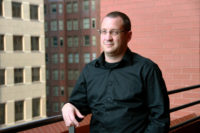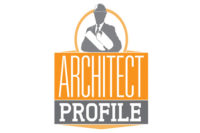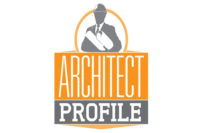As a leading architectural design and planning firm in the Midwest with a history dating back to 1967, Browning Day Mullins Dierdorf is based in Indianapolis. Walls & Ceilings Architect interviewed Daniel Overbey, Director of Sustainable Design Practices, who’s been with the company since 2005. He emphasizes how teamwork plays a big role in the success of his work, while also maintaining a strong focus on sustainable, long-lasting structures.
Browning Day Mullins Dierdorf has designed the Indianapolis Museum of Art, Indianapolis Motor Speedway Formula One Master Plan, Pagoda Control Tower and the University of Louisville’s Natatorium, to highlight a few.
Walls & Ceilings: How many years do you have in the profession?
Overbey: I’ve been working in the professional field of architecture for 7 years. However, I published my first white paper on passive solar heating research through the American Solar Energy Society in 2004.
Walls & Ceilings: What is your work history in this field?
Overbey: After earning a Bachelor of Architecture degree, I had the pleasure of working with Pliny Fisk at the Center for Maximum Potential Building Systems (CMPBS) in Austin, Texas. During graduate school, I worked as a researcher at the Natural Energies Advanced Technologies Laboratory at UNLV. Then, I received a wonderful opportunity to apply research and energy modeling to the design process when I joined Tate Snyder Kimsey (TSK) Architects in Henderson, Nevada in 2006. I relocated to Indianapolis, Indiana in 2008 and joined Browning Day Mullins Dierdorf (BDMD) Architects.
Walls & Ceilings: Where did you go to school?
Overbey: I earned a professional Bachelor of Architecture degree and a Bachelor of Science in Environmental Design at Ball State University (BSU). Then, I earned a professional Master of Architecture Degree at the University of Nevada, Las Vegas (UNLV).
Walls & Ceilings: Did you have a specialization?
Overbey: While I enjoy all aspects of architectural practice, my work focuses on high-performance building design and construction, environmental systems research, LEED-related services, and design performance modeling.
Walls & Ceilings: Do you approach architecture from an artistic or functional starting point? Are the two concepts exclusive?
Overbey: That’s a great question. So many of my contributions to design teams revolve around functionality and performance. However, I believe that designers always need to be cognizant of the relationship between spirit and matter. If our contributions to the built environment are not inspiring, they will not be appreciated. We need to realize safe objects of long-term resilience, but if our creations do not elevate the human spirit, then they are destined for obsolescence.
Walls & Ceilings: If any, who are your role models?
Overbey: Whether during school or throughout my professional career, I’ve always been blessed to work closely with someone whom I would consider to be a role model or mentor. Tony Costello at BSU; Alfredo Fernández-González at UNLV; Pliny Fisk at CMPBS; Windom Kimsey at TSK; Jonathan Hess at BDMD. These are special individuals who have greatly influenced my approach to design.
Walls & Ceilings: What projects, other than your own work, do you find inspiring?
Overbey: I am inspired by the masters of architecture who find inspiration as well as instruction from the natural environment. Frank Lloyd Wright and Renzo Piano are just two examples of such masters of the built environment – there are many others. You could catalogue these designers as “green” – but it goes much deeper than that. By studying and appreciating nature’s models, systems, and processes, you can find instruction toward addressing the various needs and issues of the built environment.
Walls & Ceilings: How many buildings have you designed?
Overbey: I have always worked in a collaborative studio environment, so I am hesitant to make individual claim to any project! However, either as an architect or as an environmental design / LEED consultant, I have been involved with a few dozen projects.
Walls & Ceilings: If you had to choose one to represent your work, what project would you choose?
Overbey: If I had to choose one, I would choose the Chrisney Branch of Lincoln Heritage Public Library. Admittedly, it is a very modest structure. However, it exemplifies what can happen when the owner, the community, and the design team all work together toward a common goal. I had the pleasure of serving the project team as an environmental design consultant. Working with project architect Bill Brown, we leveraged design performance modeling to ensure that the library performed well while reducing loads as much as possible. By using early stage energy modeling as a tool, we were able to make better design decisions and achieve our team goal of (verified) net-zero energy.
Walls & Ceilings: What are your guiding principles when designing a structure?
Overbey: I read William McDonough and Michael Braungart’s book Cradle-to-Cradle in 2002 and it changed my entire perspective on architecture. I think it is the only book that I have two copies of. Many of the concepts defined in that book are distilled in The Hannover Principles – which I keep posted at my work table.
Walls & Ceilings: If you could have any building to redesign—anywhere in the world—which would you like to address?
Overbey: An architect is confronted with thousands of decisions on every project. We develop a very intimate knowledge of our structures and invariably, there will be a handful of decisions you would like to change. The continual pursuit of improvement by the sharing of knowledge – that makes design a never-ending process.
Walls & Ceilings: What types of products interest you?
Overbey: I am very interested in products with disclosed human/environmental health and life cycle analysis information. Over the next several years, I believe we will see the emergence of Health Product Declarations (HPDs) and Environmental Product Declarations (EPDs) throughout the building design and construction industry. Some manufacturers are already being proactive and offering HPDs and EPDs. This will be the decade in which product transparency is prioritized.
Walls & Ceilings: What types of products in the wall and ceiling industry really interest you?
Overbey: In general, I am fascinated by the creative strides made by the wood and agifiber products industry. There are many creative products coming to market. The industry is finding a way to create wall and ceiling products with minimal health impact from regionally reclaimed and high recycled content sources.
Connect with Daniel on LinkedIn here.










